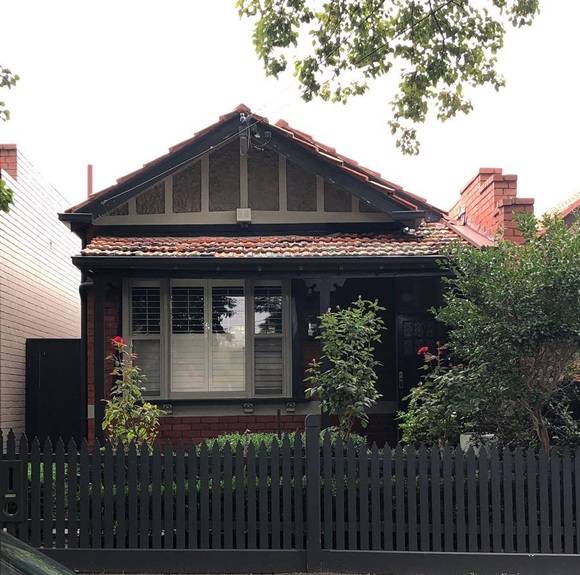| Back to search results » | Back to search page » |
|
Residence, 17 Banole Avenue, Prahran
Location17 Banole Avenue PRAHRAN, STONNINGTON CITY LevelIncl in HO area Significant |
|
Statement of Significance
Part of the Banole Estate Precinct
What is significant?
The Banole Estate Precinct is a residential area in Prahran
comprising all of Banole Avenue and adjoining parts of High Street.
The precinct was subdivided in 1914 as the Banole Estate and
designated a 'brick area' in which timber dwellings were prohibited.
The estate was almost fully complete by c1925 with pnly two minor
infill housing developments occuring in the mid to late 1930s.
Building stock on Banole Avenue is predominately composed of modest
semi-detached dwellings built between 1915 and 1918. The precinct's
High Street frontage is characterised by larger freestanding villas
and bungalows dating from the early 1920s. Elements which contribute to the significance of the precinct include
(but are not limited to): -high degree of intactness of the area to its c1925 state arising
from the absence of modern infill;
How is it significant?
The Banole Estate Precinct is of local historical and aesthetic
significance.
Why is it significant?
The Banole Estate Precinct is of historical significance as evidence
of the major phase of suburban development which took place in the
Municipality in the first decades of the twentieth century as the
economy recovered and public transport networks were expanded
(Historic Theme: 3.3.5 Recovery and Infill). The precinct
also demonstrates a rare pattern of settlement in Prahran as a
complete Edwardian subdivision. In this part of the municipality,
Edwardian dwellings more typically occur as infill development in
partially complete 1880s subdivisions. In addition, the precinct shows
how the built form character of the Municipality was shaped by
building regulations prohibiting timber construction. The precinct is of aesthetic significance for its remarkably intact
and cohesive collection of Edwardian and interwar housing. While
individual buildings are reasonably typical of these periods, the
repetitive rhythm established by the concentration of largely
identical cottages on Banole Avenue is of particular significance.
-the repetitive character of the
building stock and the regularity of rhythm of the built form,
particularly on Banole Avenue;
-intactness of individual buildings
to their original states. Dwellings typically survive with
their
presentation to the street largely unaltered retaining
verandahs and decorative render and timber detailing;
-the
consistent, modest single-storey scale of the built form (the
double-storey duplex at 9/11
Banole Avenue by Howard R Lawson being
a notable and valued exception);
-face red-brick or render
materiality and gabled or hipped roofscapes with chimneys and
terracotta tile cladding;
-the generally uniform front setbacks and
modest side setbacks;
-the consistent low front fences heights in
most sections of the precinct; and,
-the almost total absence of
modern vehicle accommodation in front and side setbacks.
Group
Residential buildings (private)
Category
Cottage




